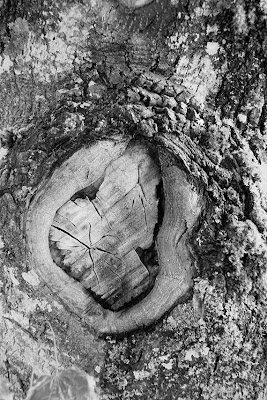I was invited to participate in an exhibition from the Salem Art Association at the Bush Barn Art Center. The theme was "Parks for People: The Art of Stewardship." The only criteria was that the image had to have been taken at the Bush Pasture/Park or the Deepwood Estates, in Salem. I thought I had all the time in the world. I was wrong. I had a meeting that had been postponed once before on September 1 at the Art Center and I thought I would kill two birds with one stone. After the meeting, I would traipse around the Bush grounds and–just like that–capture an image to submit. Again, I was wrong. I read the artist information incorrectly. The piece had to be submitted by September 1.
I had had surgery at the beginning of June and was just about recovered when I came down with a difficult to diagnose respiratory malady. I was weak, tired easily and was having trouble breathing. It turned out to be pneumonia. The accompanying dry cough had aggravated my surgical recovery and, all in all, I was pretty much a mess.
I went for the meeting on the 1st and learned I was about to miss the deadline. I asked the gallery director if I could have an extension. This was on the Thursday afternoon before the Labor Day weekend. She consented. I could bring a piece in on Tuesday morning, no later than 10:00 am.
The pressure was on. Pressure I didn't really think I was up to. I tried to beg off submitting a piece. I got a smile in reply and a siren song. "I'd really like you to participate."
Great.
So, with labored breath and undue pressure, I pored over the grounds of the Bush Pasture. I started at the greenhouse, trying to capture the patterns of drips and shadows outside. Then I entered, looking for the image that I thought was waiting for me.

Coleus, Bush Greenhouse, Salem, Oregon–9.1.2011
I took a number of photographs of the plants in the greenhouse. I tried to get the wrought iron bench and capture the shadows cast by the window panes above. My all-purpose zoom lens fritzed out on me. I switched to the macro and then the normal, fixed focus. I was wheezing and losing faith in my ability to pull a photograph out of an imaginary hat. I didn't have to review what I was shooting. I knew it wasn't happening.
Fallen Apples, Bush Pasture, Salem, Oregon–9.1.2011
I walked around the trees, looking at the gnarled branches and the fruit trees. I took a few exposures of apples that had fallen around the tree. I was getting more and more discouraged. I was half-thinking of going back into the Art Center and admitting defeat. It seemed the more I looked, the less I saw. I was shooting for the sake of it, uninspired and bereft of the all-important mojo. I decided to head over to the Deepwood Estate and see if I could be inspired there.

The Secret, Deepwood Estate, Salem, OR–9.1.2011
No sooner did I park and drag myself by yet another greenhouse did I find my photograph. Or, should I say, it found me.
Three young women, dressed in the shiny satin looking long gowns of Russian Old Believers or Mennonites, with covered heads, were across the path from the greenhouse. One was seated with an iPod, the ear-buds firmly in place. The other two were standing, their heads close in conversation. As I looked into the locked greenhouse, I saw the two women's reflections in the glass. Eureka!!!
I took maybe a half dozen exposures and didn't review them until I got home. I almost felt like I was stealing... stealing perfection. It just felt so right. It was one of those rare and wondrous moments in photography—a Minor White moment. I had stopped looking and had instantly found my photograph.
Minor had a theory about "found photography." I have interpreted it to simply mean that the images are "there." They are just waiting to be found. One "takes" a photograph. They are there for just such a purpose.
I showed my wife the series and she instantly gravitated toward the first exposure of the six. Initially, I printed the image as a 12" x 18". But the image is too intimate for that size. I went back and printed it about 8" x 12" and had it framed in a 16" x 20". I delivered it Tuesday morning at 10:00. The gallery director really liked it. It got a good response at the show's opening... and I found out today that it had been sold. I called the buyer, who said it "drew her in."
My old teacher, William Giles, was a student of Minor White. He learned his lessons well and passed them on to his own students. I learned them and continue to learn them. The power of photography is transformative. I am so gratified there are a few folks out there who get what I try to do with my camera, my eyes and maybe something deeper. I thank you for that.


















































